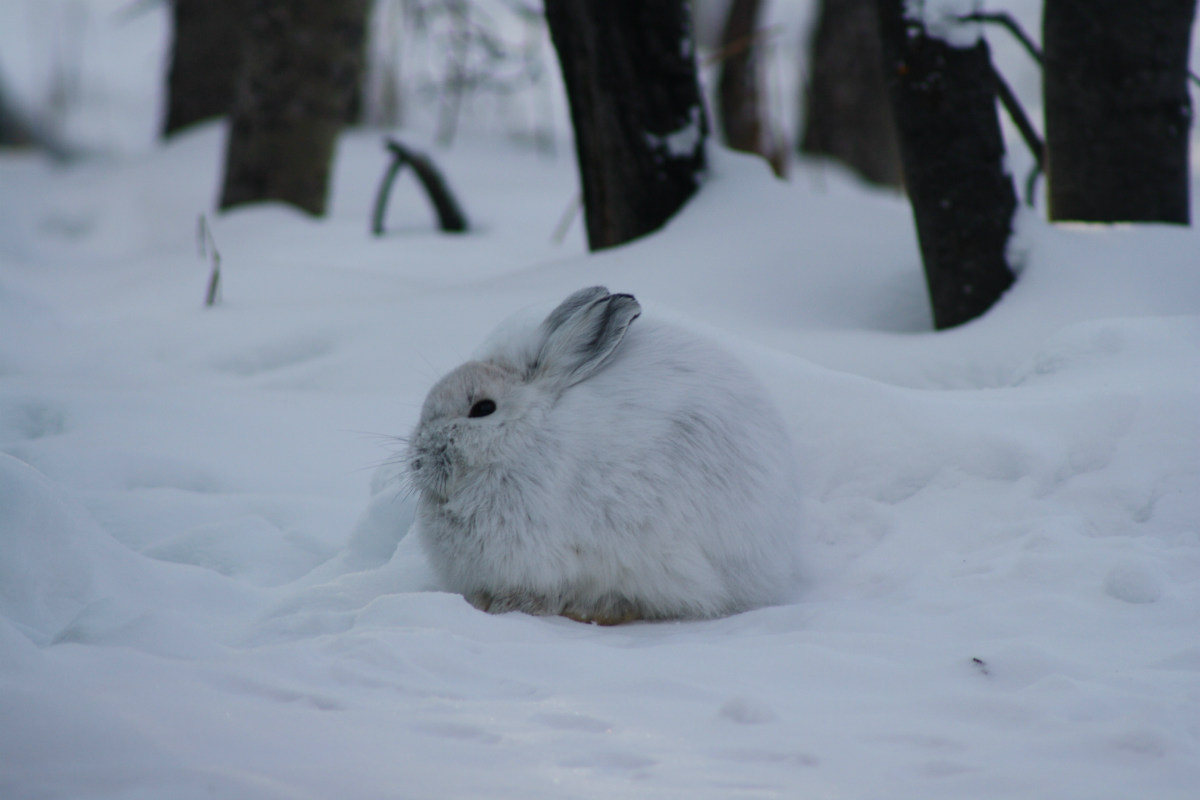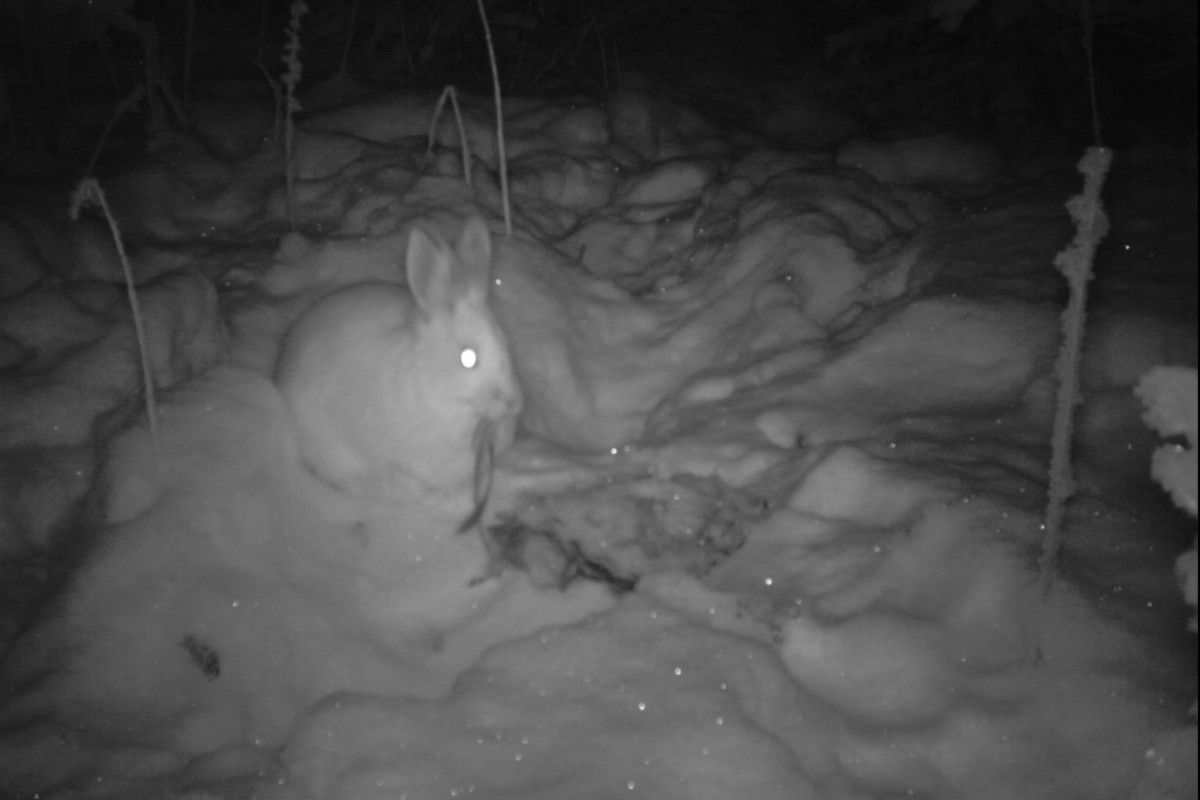
Snowshoe hares engage in scavenging, eating the remains of a variety of species, according to a new study by University of Alberta biologists. Image courtesy of Michael Peers.
Snowshoe hares scavenge food from carcasses from a variety of species according to a new study by University of Alberta biologists. The behaviour, not typically associated with hares, may be a way to supplement nutrient intake during the winter months.
"We have documented them scavenging other hare carcasses, grouse and even lynx, their main predator," said Michael Peers, PhD candidate in theDepartment of Biological Sciences and author of the paper. "We also found them consuming feathers from spruce grouse carcasses on multiple occasions."
While scavenging in hares has been previously reported, both the frequency and diversity of species they consume has never been documented-and neither has the consumption of feathers, a behaviour rarely seen in mammals.
"I was very surprised at how common the behaviour appears to be for the species, as well as the diversity of species that hares will scavenge," said Peers.
Food for thought
The study also found patterns in the hares' scavenging, which gives insight into potential reasons for the behaviour. "It appears scavenging is more common during the winter, which suggests its occurrence may be related to food or nutrient limitation," said Peers.
Peers noted that during the winter, hares primarily eat a variety of woody plants that are low in protein. The findings suggest scavenging may be a way hares can increase their protein intake during the winter months.
"Researchers are beginning to suspect that the occurrence or frequency of scavenging is higher than previously suspected, by species not often considered scavengers," said Peers. "Documenting such occurrences provides insight into the natural history of this species and improves our understanding of the frequency of this phenomenon."
The paper, "Scavenging by snowshoe hares (lepus americanus) in the Yukon, Canada," appears in the Northwestern Naturalist (doi:10.1898/NWN18-05.1).
